Inside the Karabakh military trial in Baku Revelations on Armenia’s role and occupation crimes
Two separate criminal proceedings involving 16 Armenian nationals have entered their tenth month at Baku’s Military Court. Over this period, extensive testimonies and large volumes of evidence have been submitted, documenting the atrocities committed by the now-defunct separatist regime against the Azerbaijani population over the course of its illegal occupation. Statements made by the co-defendants—who face charges ranging from the forced displacement of Azerbaijani civilians, terrorism-related offences, to the mass killing of non-combatants—have also further substantiated many of Baku’s long-held assertions regarding the true origins and backing of the separatist entity.
The co-defendants comprise the political leadership of the self-proclaimed and internationally unrecognised “Nagorno-Karabakh Republic” separatist regime, including three former “presidents,” alongside other senior political and military “figures.” Throughout the ongoing trial, their testimonies have offered a rare glimpse into the inner workings of the unlawful entity—its governing structure, its true ultimate objectives in perpetuating the conflict, and the external powers that exerted real control over its actions. The following article reviews the most significant revelations that have emerged from the proceedings thus far.
Complex intricacies of the Karabakh conflict
For nearly three decades, Azerbaijan was denied access to nearly one-fifth of its sovereign, internationally recognised territory due to a conflict that began to erupt in the run-up to the Soviet Union’s collapse. In the late 1980s, a separatist entity composed of ethnic Armenians emerged in the Karabakh region, which was then part of the Nagorno-Karabakh Autonomous Oblast (NKAO)—an administrative unit within the Azerbaijan Soviet Socialist Republic, which, like countless other such oblasts across the Soviet Union, enjoyed limited autonomy while remaining under the legal authority of its parent republic. However, in contrast to the vast majority of the other autonomous oblasts, armed separatist groups violently expelled ethnic Azerbaijanis and other minorities from the area, triggering a humanitarian crisis resulting in almost one million internally displaced people (IDPs) who sought refuge in other parts of the country.
The Soviet and Azerbaijani governments never recognised the self-proclaimed “Nagorno-Karabakh Republic” (NKR) nor the sham referendum held there, which sought full secession from Azerbaijan while being held with participation of only a pre-selected segment of the local population. It is important to note that the borders of the former Nagorno-Karabakh Autonomous Oblast (NKAO) lay entirely within Azerbaijan and did not touch any external frontiers.
What followed was a bloody war between Azerbaijani forces and the Armenian army, operating under the guise of the “NKR army.” The conflict claimed thousands of lives on both sides and saw armed separatist forces carry out multiple massacres against Azerbaijani civilians, most notably the Khojaly genocide in 1992.
The First Karabakh War ended with a ceasefire in 1994, freezing the conflict for nearly three decades. During this time, it shifted to the diplomatic arena, with numerous negotiations to follow, including those mediated by third-party countries and international organisations such as the now-defunct OSCE Minsk Group.
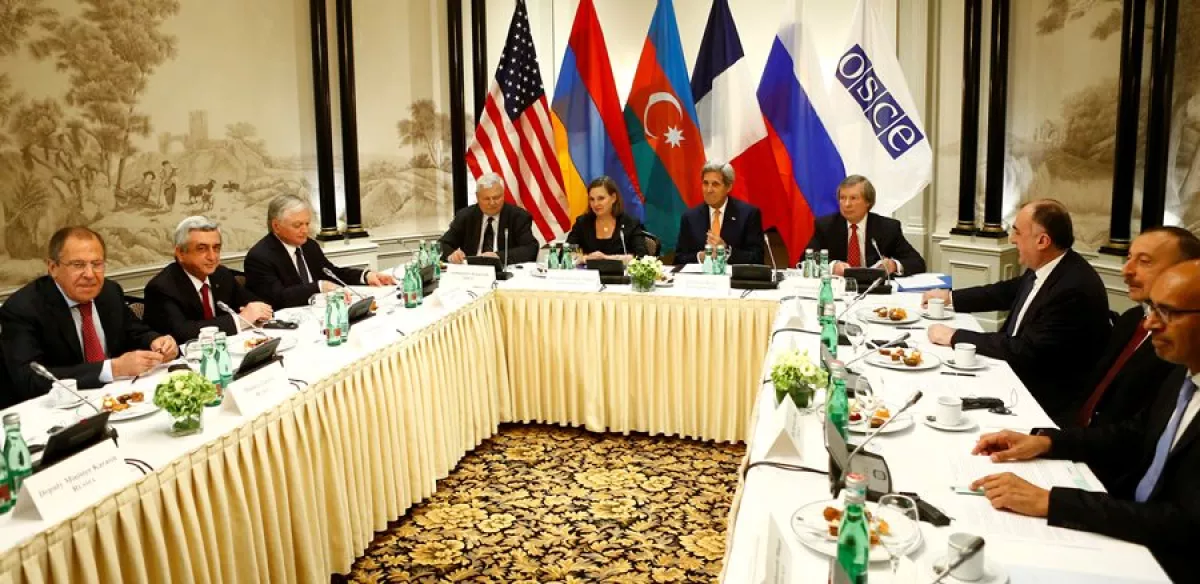
It was only after repeated armed escalations and Azerbaijan’s 2020 military operation known as the Second Karabakh War that Baku restored its sovereignty over most of the illegally occupied territories.
The last remaining inches of Azerbaijan’s sovereign territory returned to its lawful control in 2023, following a swift counterterrorism operation by the Azerbaijani army that targeted the remnants of the illegal armed formations. Shortly afterwards, the unrecognised “governing body” of the separatist entity announced its dissolution, effectively abandoning its unlawful claims over Azerbaijani lands.
With this, long-awaited peace in the region appeared within reach. A series of negotiations between Azerbaijan and Armenia soon followed, focusing on key issues such as the exchange of detainees, the clearance of deadly landmines planted by Armenian forces throughout the decades, and the reopening of regional transport routes.
As both nations began cautiously looking toward a peaceful future of coexistence, the Azerbaijani people didn’t forget the painful memory of the atrocities committed under the separatist regime’s decades-long occupation.
The lead-up to the defendants’ capture
In the decades of the conflict’s dormant phase, Azerbaijani authorities collected extensive evidence and witness testimonies documenting the war crimes and atrocities committed by the separatist entity and its supporters in the occupied territories.
After the separatist “NKR” was dissolved in 2023, the Armenian population began abandoning the area and embarking on the short journey to Armenia’s border even though Baku made clear that they could remain if they chose to integrate into Azerbaijani society. Although these civilians had been living illegally on Azerbaijani land for over thirty years, the government emphasised that, as citizens of Azerbaijan, they would be granted full rights and protections upon obtaining Azerbaijani citizenship.
Much of the political leadership of the so-called “separatist government” blended into the flocks of those people leaving the occupied territories who rejected Azerbaijan’s offer of integration. However, Azerbaijani military intelligence had already been working since the ceasefire to identify those responsible for atrocities committed against its citizens. As a result, border guards managed to detain several suspects attempting to flee to Armenia.
The trial
Currently, 16 individuals of Armenian origin are standing trial before Baku’s Military Court, divided into two separate proceedings. One of them involves billionaire Ruben Vardanyan — a former Russian citizen who moved to the occupied Karabakh region in 2022 to serve as the separatist entity’s so-called “state minister” after renouncing his citizenship. His case is being tried separately, as he faces a distinct set of serious criminal charges, including planning and waging an aggressive war, organising the deportation and forced displacement of civilians, acts of terrorism and their financing, torture, mercenary activity, and multiple violations of the customs of war.
On January 17, 2025, both the joint trial against the 15 individuals as well as that against Vardanyan began in Baku’s Military Court and is being presided over under the chairmanship of Judge Zeynal Aghayev, with Judges Jamal Ramazanov and Anar Rzayev (reserve Judge Gunel Samadova).
The following 15 individuals, many of whom formed the illegal entity’s political-military “leadership”, are the co-defendants in the joint trial:
-
Arkadi Ghukasyan, second “president” (1997-2007), who also served as its “foreign minister” (1993-1997)
-
Bako Sahakyan, third and longest serving “president” (2007-2020), who also served in various “ministerial” posts
-
Arayik Harutyunyan, fourth “president” (2020-2023)
-
Davit Babayan, “advisor” to the “president” (January-September 2023), who previously served as “minister” of foreign affairs (2021-2023)
-
Davit Ishkhanyan, “speaker” of the separatist entity’s “national assembly” (August to October 2023), who held various military positions before that
-
Levon Mnatsakanyan, “minister” of defence and “commander-in-chief” of the separatist regime’s “defence army” (2015-2018), who subsequently held various posts within the “administration” law enforcement
-
David Manukyan, “deputy commander” in the self-styled republic’s “army”
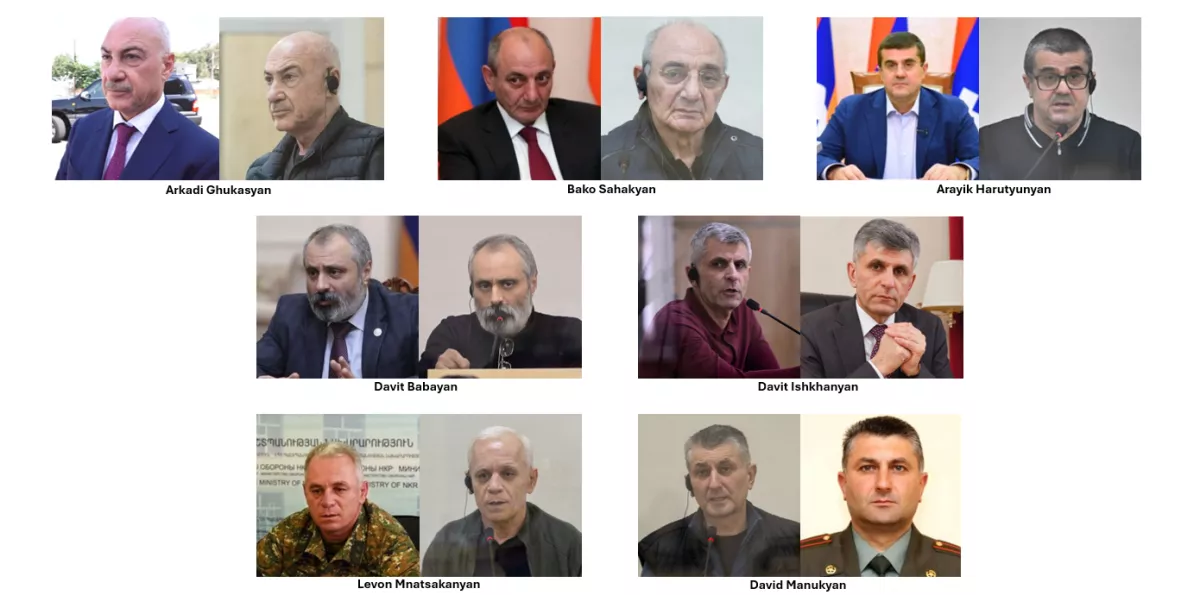
The other eight co-defendants—Vasili Beglaryan, Erik Ghazaryan, Davit Allahverdiyan, Gurgen Stepanyan, Levon Balayan, Madat Babayan, Garik Martirosyan, and Melikset Pashayan—are being tried for crimes they are accused of committing in Azerbaijan’s occupied territories during the military conflict.
Key admissions made in testimonies
Over the past 10 months, Baku’s Military Court has heard extensive testimonies not only from the co-defendants but also from witnesses recounting harrowing events from the years of conflict. Combined with a large body of documentary evidence, the findings have confirmed several long-held suspicions of the Azerbaijani authorities — shedding light not only on the circumstances surrounding the mass killings of Azerbaijani civilians but also on the true chain of command and decision-making structure within the separatist regime.
Direct involvement of the Armenian government in ”NKR” activities
Throughout the conflict, Yerevan presented to the international community that the separatist ambitions of ethnic Armenians in Karabakh were purely their own and not directed by the Armenian state. Yerevan repeatedly insisted that its military was not directly involved in operations in the occupied territories, providing only financial support. Aware of the political, legal, and moral implications of its occupation and annexation, Armenia framed its actions as the Karabakh population’s right to self-determination, portraying the conflict as an internal matter of Azerbaijan. A direct deployment of the Armenian army in internationally recognised Azerbaijani territory, however, would have given Azerbaijan a clear casus belli and amounted to an illegal occupation.
However, in the course of the testimonies offered by the co-defendants, this narrative has been debunked.
Levon Mnatsakanyan noted that during his service as commander of the so-called “defence army,” the financing, arming, and other needs of the “army” were carried out by the General Staff of the Armed Forces of Armenia at the expense of the state budget of Armenia.
Former “president” Bako Sahakyan confirmed that during the 2016 April battles along the border of the separatist entity with Azerbaijani forces, the military operations were led by Armenia’s then-Defence Minister Seyran Ohanyan, and his Chief of General Staff Yuri Khachaturov together with the regime’s Lieutenant-General Mnatsakanyan.
Arayik Harutyunyan, the last “president” of the self-declared “NKR”, also provided testimony that confirmed this. He recalled visits to the “NKR’s army training sessions” when he first entered office as the entity’s “leader.”
“Since I was a new person, I had to get acquainted with the situation in the 'army' and find out what was going on there on the line of contact. In the summer of 2020, I started to travel to the front line and get acquainted with the 'army',” he stated. Harutyunyan revealed that he observed the exercises of the “Karabakh army” in the summer and at the end of June of that year, acknowledging that the exercises were led by the Chief of Staff of the Armenian army, Onik Gasparyan.
Ganja bombings
Harutyunyan also revealed in his testimony that the decisions on strikes deep into Azerbaijani territory had been made in Armenia and not by himself. On the first day of the trial, Harutyunyan requested to address the court. He expressed his regret over his remarks regarding the multiple missile attacks on Ganja that occurred in the course of the Second Karabakh War.
Shortly following the first of the multiple missile attacks, Harutyunyan claimed responsibility for ordering the bombardment of Ganja, a city located 100 kilometers away from the combat zone. However, during his testimony, he revealed that those remarks were false and that he did not have the capability to order such attacks.
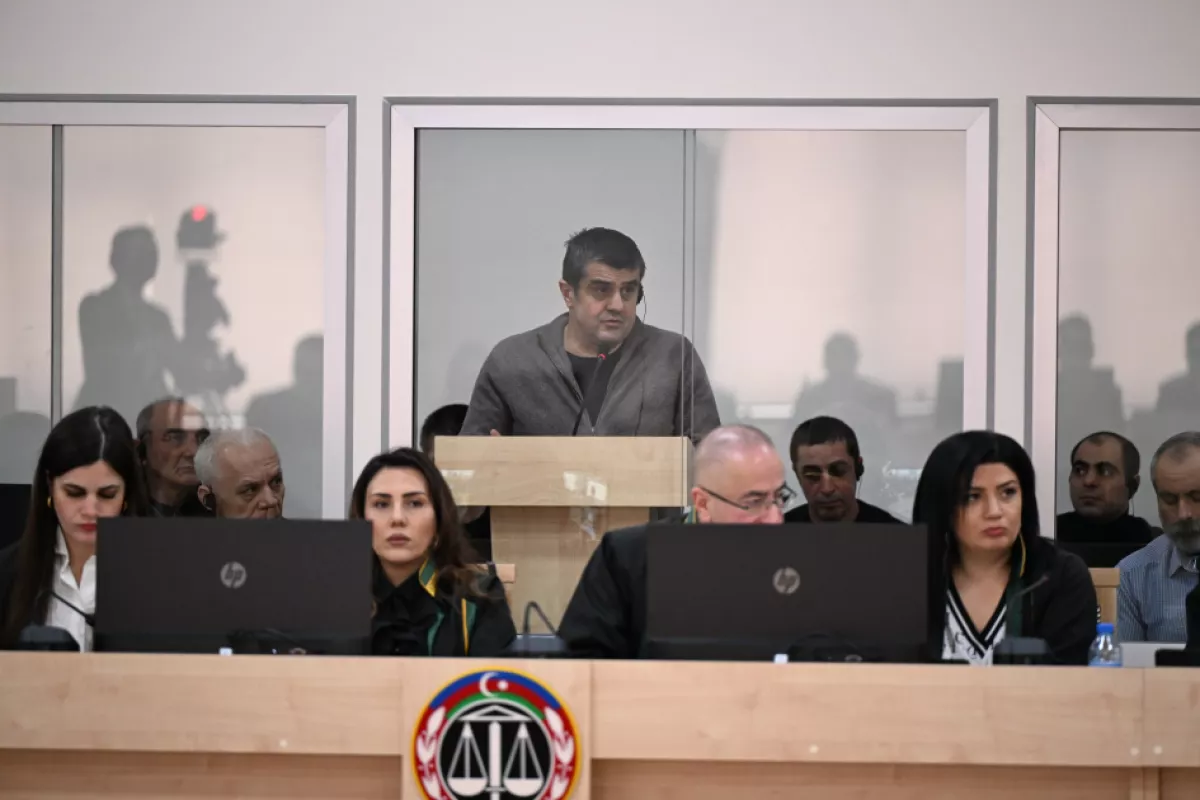
“There is a perception among the Azerbaijani people that I issued this order [of the October 4 attack.] This decision was not made by me. Yes, I made a statement regarding this incident at the time, but I now regret that statement and apologise. I neither had the authority nor the capacity to express an opinion on such matters. I explained during my testimony to the investigation why I made that statement at the time.”
He further clarified his statement, acknowledging that he “didn't know who had what powers, what weapons should be used, what would be done, and so on. When I asked Onik Gasparyan if these decisions were justified, he told me yes, Azerbaijani airports were our primary targets and we must destroy those targets. It has been ordered that we should create the impression that these strikes are being carried out from Karabakh.”
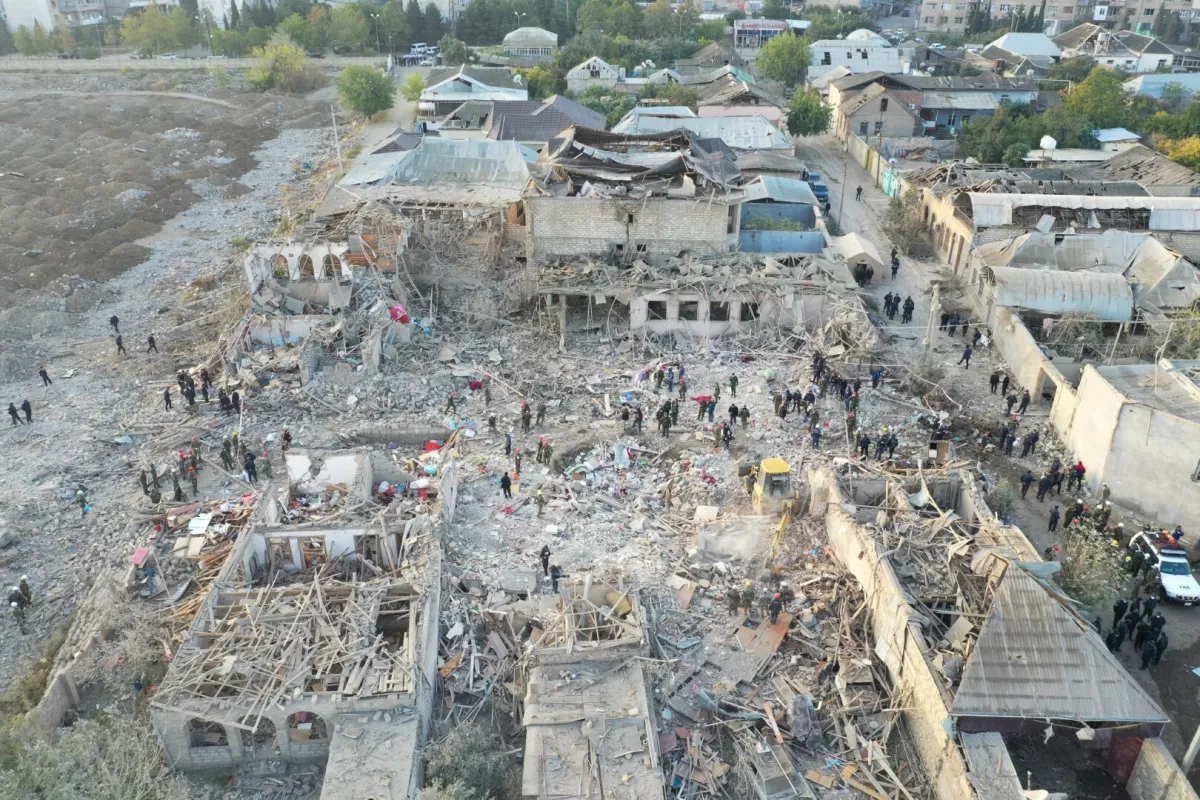
Unification with Armenia as separatists’ ulterior motive
On 5 August 2019, Armenian Prime Minister Nikol Pashinyan declared in the then-occupied Khankendi that “Karabakh is a part of Armenia and full stop”. That statement explicitly showed that Armenia’s actual goal was aggression. By calling for the annexation of the occupied territories of Azerbaijan, Armenia violated the norms and principles of international law, the UN Charter, the Helsinki Final Act, and showed its disregard for the international community, in particular the OSCE Minsk Group co-chairs tasked with resolving the conflict through negotiations. Addressing the 16th annual meeting of the Valdai International Discussion Club on 3 October 2019, President of the Republic of Azerbaijan Ilham Aliyev responded to Pashinyan’s statement by recalling that not even Armenia itself recognises this statement to be true as they also did not recognise the “NKR’”s sovereignty. Aliyev called Pashinyan’s remarks “a lie, to put it mildly,” and pointed to the fact that both the Lower and Upper Karabakh are recognised by the world as an integral part of Azerbaijan.
In the course of the trial, a 2015 statement by Sahakyan to an Argentinian media outlet, widely spread in the Armenian press at the time, was read out. In his interview, he did reveal that the “NKR” ultimate goal was to “unite with Armenia at some point” and that his people “lived with that longing” but acknowledged that “the time” had “not come yet.”
When the court asked him about those remarks, Sahakyan confirmed their authenticity and confirmed that he did plan to implement this objective “when the conditions are more favourable,” referring to the unification of Azerbaijan’s formerly occupied territories with Armenia.
During Davit Ishkhanyan’s testimony, in which he spoke of his participation in military operations in various Azerbaijani cities during the First Karabakh War, the accused answered the prosecutor’s question about the purpose of Armenia's military aggression against Azerbaijan. His response echoes that of the other defendants, in which he confirmed the long-suspected true motive behind the separatist claims. He said, “I cannot talk about that period, because I was too young at the time. But when I became an adult, I realized what [the] strategic goals and strategic principles were. The strategic goal was the unification of Karabakh with Armenia.”
Khojaly genocide
The occupation and ethnic cleansing of Azerbaijan’s Karabakh region and seven surrounding districts in the early 1990s by Armenian armed forces involved extreme violence and countless atrocities. The most devastating was the massacre of civilians in Khojaly on the bitterly cold morning of February 26, 1992. The attack claimed 613 Azerbaijani lives, including 106 women, 63 children, and 70 elderly individuals, leaving a deep scar in Azerbaijan’s national consciousness as the largest massacre of the entire conflict.
Previously obtained evidence confirmed that the assault on civilians was orchestrated by Armenian forces, supported by the 366th Motorised Rifle Regiment of the former Soviet Union. Some Armenian leaders of that period openly admitted to the deliberate use of force and violence for ethnic cleansing. For example, Serzh Sargsyan, former President of Armenia (2008–2018) and a military commander during the first Karabakh war, would later boast to British journalist Thomas de Waal: “Before Khojaly, the Azerbaijanis thought that they were joking with us, they thought that the Armenians were people who could not raise their hand against the civilian population. We needed to put a stop to all that [stereotype.]”
From Azerbaijan’s perspective, Khojaly was not an isolated incident but part of a broader campaign to expel Azerbaijanis from their sovereign territories.
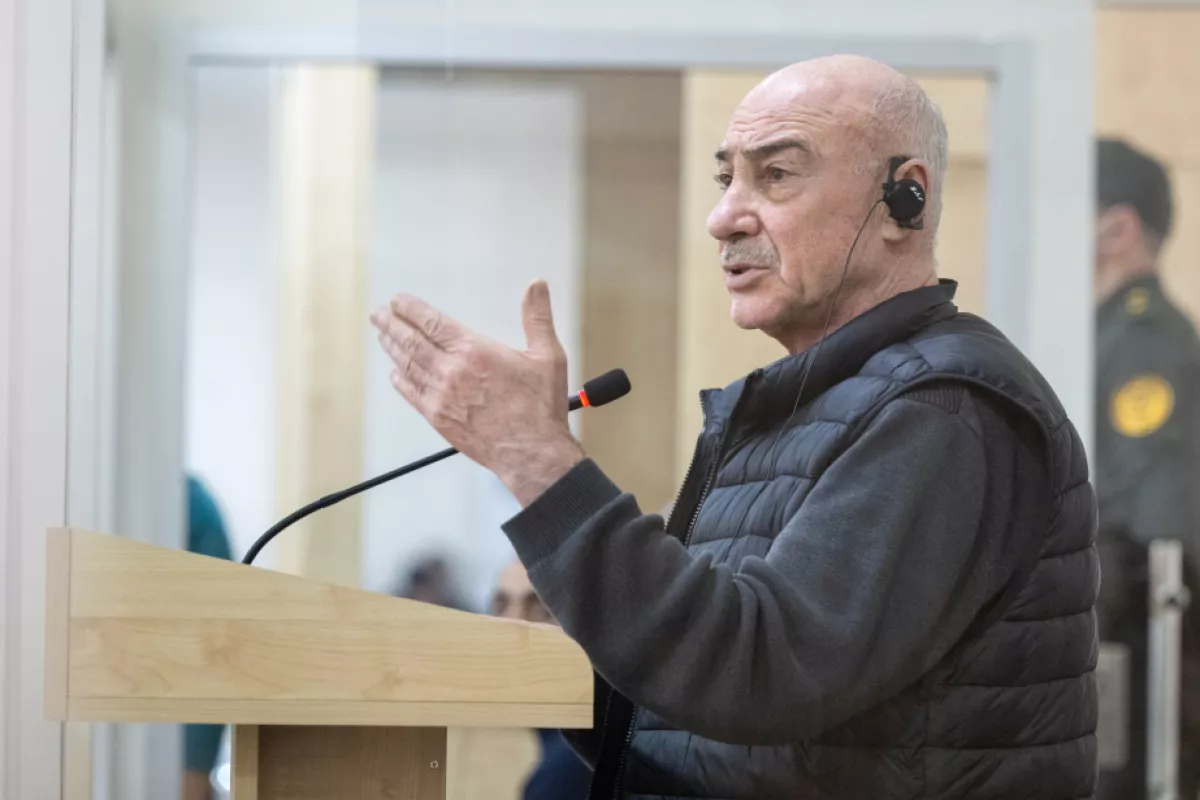
In his testimony, Ghukasyan said he first learned of the events through “official reports” in February 1992. He noted, “We did not know the scale of the tragedy at that time,” explaining that the self-styled “republic” was led by Artur Mkrtchyan, while the military was under Arkady Ter-Tadevosyan, nicknamed “Commando,” who held various leadership positions in the Armenian armed forces.
Sahakyan also claimed to have been unaware of the Khojaly operation, stating that he learned of the 366th Motorised Rifle Regiment’s participation in the massacre. He added that Seyran Ohanyan, who later became Armenia’s Minister of Defence, served in that regiment.
Another co-defendant, Madat Babayan, testified during his preliminary investigation that on February 24, 1992, a commander named Arkadi Shirinyan addressed three military units, announcing they would launch an attack to massacre Azerbaijani civilians in Khojaly the following day. Babayan admitted that, following orders, he fired indiscriminately with an automatic weapon on men, women, the elderly, and children alike.
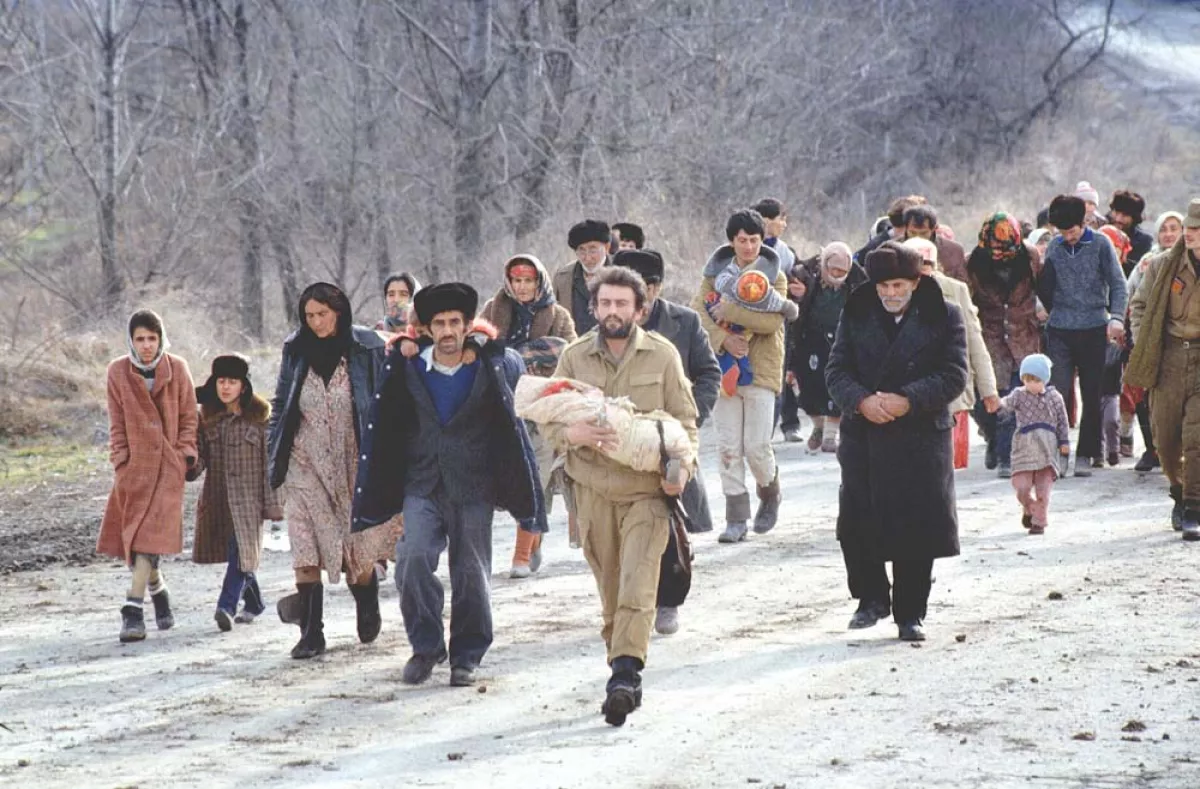
While the trial forces many to relive horrific memories and risks reopening a painful wound in Azerbaijan’s collective consciousness, judicial accountability is essential for the healing process. The ongoing military trial holds the potential to serve as a crucial step toward a shared peaceful future for both nations. However, this can only succeed if all traces of ideologies that threaten reconciliation are fully eradicated.
By Nazrin Sadigova








